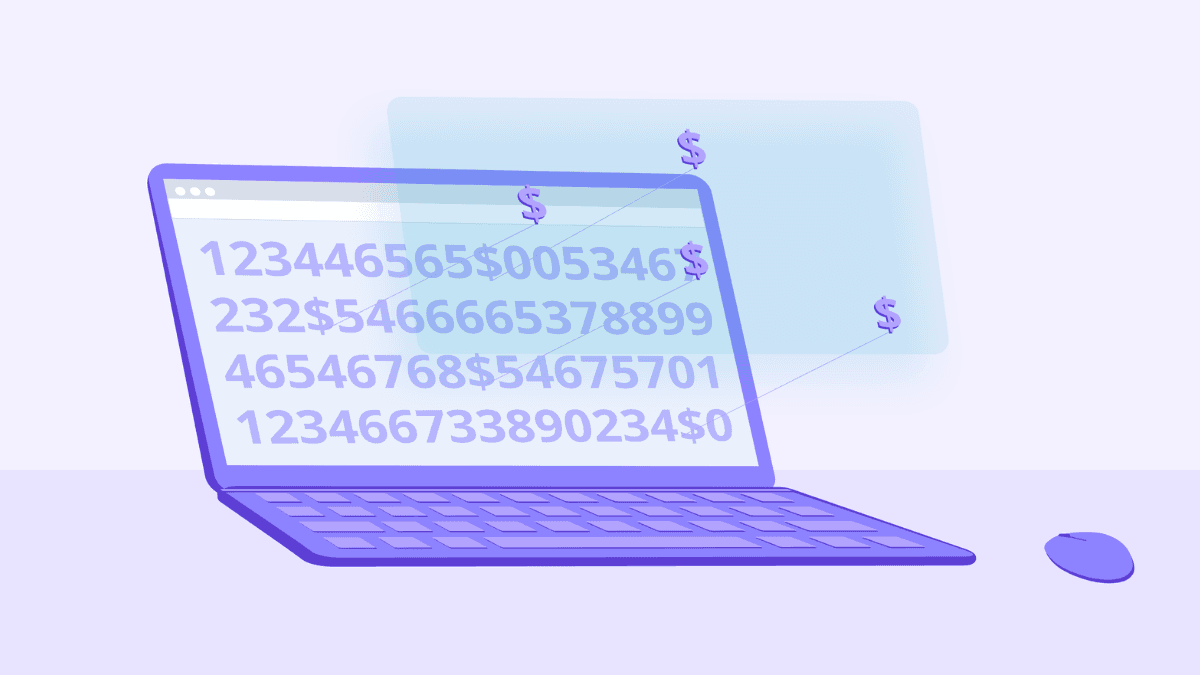Freelance Data Analyst Rates

As a freelance data analyst, you collect and interpret datasets and use analytical tools to assess factors like sales performance and market trends. Freelance data analysts work for clients in a huge range of industries. Teams in sales and marketing, healthcare, banking, logistics, government, and the nonprofit sector all rely on data analysis to give them strategic recommendations.
Make a Free Invoice NowData analysis is typically learned in higher education—most data analysts hold at least a bachelor’s degree in statistics, mathematics, economics, or a related analytical field. You likely also need proficiency in various programming languages and technical database development skills, depending on the sector you serve. Because data analysis is a “hard skill” set that is intricate and highly technical, you’ll need significant work history as an in-house analyst before hanging out your own shingle as a freelancer.
Freelance Data Analyst Average Hourly Rates
The average hourly rate for data analysts across all experience levels and US markets is $34. For early-career freelance analysts, Upwork rates start at $20 an hour and range up to $50.
Data analysis rates vary significantly across different industries, and there are plenty of freelance analysts out there charging north of $150 an hour, so don’t think of $50 an hour as a cap—it’s more like the high end of your potential starting rate. Many analysts price on a contract basis once they are more established, which skews hourly rate statistics toward entry-level, lower-priced analysts.
Another factor to keep in mind is that most data analysts who are new to freelancing aren’t new to data analysis, they’ve just recently transitioned out of working in-house. If this is you, your starting rates might feel like less than what you deserve, but understand that you’ll have to reestablish yourself as a freelancer before you can start to earn what you were making in-house (and more).
Project-Based Data Analyst Rates
If you charge on a per-project or contract basis, you have the freedom to adjust your rates according to the value you bring to the table, not just the hours of labor you perform. For that reason, many established freelance analysts choose to charge this way.
Data isn’t always complex—remember, “data” just means “information,” and some analysis jobs are small, straightforward, and low skill level (like, for example, determining how many hits your client’s websites get each day), while others are wildly intricate and are largely indecipherable to anyone without specific high-level data analysis training.
When you’re charging by the project, you’ll quote a client a flat rate for taking a dataset, analyzing it to give them the information they are seeking to glean from it, and making recommendations based on that information. When you’re working on a contract, you’re doing the same thing, except on a larger scale—contracts are typically for longer-term work, and in this case your client is essentially hiring you as a subcontractor.
To determine your pricing for per-project or contract work, the simplest tactic is to estimate the amount of time you’ll spend completing the work and multiply by your hourly rate. Consider adding ten percent to account for possible errors in your time estimation. The hourly rate you start with should represent the level of complexity of the work, as well as your experience level and skill sets.
Rates By Experience
In data analysis, your experience level is measured by both your years in the field as well as by your fluency in the various programming languages that are key to doing your job. A new analyst with just a few years of work experience who is fluent in R, Python, Java, and SQL can easily charge more than another analyst who has been working for ten years but only knows Java. When considering what experience level you are at for the purposes of determining your fee, make sure to take both factors into account.
Beginning Data Analyst
A new data analyst—so, just a couple years out of school, new to freelancing, or short on up-to-the-moment training and skills—can charge the lower side of the Upwork fee range, from $20-$30 an hour.
Intermediate Data Analyst
Once you’ve established your efficacy and have a portfolio that shows exactly what you bring to the team, you can (and should) charge more, up to $50 an hour.
Experienced Data Analyst
After you’ve been in the business for a while, have developed a specialty, and have many successful projects behind you, you can push your rate above $50. How far above? That depends largely on your industry, with pharma, biotech, aerospace, and defense paying big data consultants up to $350 an hour.
Factors That May Affect Your Rate
Data analysis is a business that, unsurprisingly, runs on data. If you’re good, you can prove it through key performance indicators (KPIs) and performance analytics, and once you establish a track record of quality work, your ability to name your rate will increase dramatically.
The industry you work for will affect the rate you can command, with retail and e-commerce, financial services, healthcare, and tech representing the highest need (and thus the most competitive comp) for data analysis.
You can increase your earning potential by pursuing specialization (which might entail earning a master’s or doctoral degree in a STEM field), and by learning new skills and additional programming languages like R and Python.
Tips for Setting Your Price
In considering how to price, it’s smart to have an hourly rate to refer to (even if only for your own internal calculations). That hourly rate should represent the minimum amount you’re willing to work for—for a passion project, say, or at a job where you’ll be gaining new skills or experience that are valuable to you for the future.
From that base amount, then consider what your specialty skills, specific experience, or domain expertise is worth. Generally speaking, the more training you’ve undertaken and the more niche your skill set is, the more you can and should charge for your services.
How to Know If You’re Pricing Too Low
Freelancers are understandably close-mouthed about their rates, but if you’re able to do some networking and you get the impression that you’re charging less than others, you may want to consider raising your rates. Coming in at the middle-to-high end of what others are charging for similar work will allow you to remain competitive without undercutting the industry standard.
Similarly, if you have tons of work and it’s more than you can handle, you’re likely pricing too low, and you could probably be earning more (or working less for the same income) by upping your rates a bit.
How to Know If You’re Pricing Too High
Client pushback on pricing is one way to tell if you’ve priced yourself out of your market, but it isn’t always reliable data, as some clients will negotiate down from any starting bid. Take stock of your business and notice: do you have frequent repeat work? Do you get referrals from past clients? Have you ever walked away from a negotiation because the client wasn’t willing to meet you close enough on price? If any red flags emerge from this line of inquiry, consider dropping your rates to see if your flow of work increases.
How to Negotiate with a Client
Whether you’re negotiating an initial contract or lobbying an existing client for a raise, you want to use the skills you bring to the table on your own behalf. You’re an expert in looking at information and making recommendations based on what it shows you—so show your client what you’re worth, and why your worth has increased. Treat your work like another dataset, avoid emotionality, and use logic to point to why you deserve more comp.
When to Increase Your Rate
Because data analysis is a field with constantly evolving languages and tech demands, professional development needs to be forever on your front burner. Whenever you make significant gains in this pursuit—say, learning a new programming language or earning an advanced certification—your rate should reflect your growing value as an analyst. You’re a Swiss Army knife, and you just grew a new tool, so of course you should cost more.
Your rate, like every freelancer’s, should also increase incrementally every year by 5-10% to keep up with cost-of-living increases and your growing length of experience in the field.
You Bring Information to the Table
As a data analyst, you are the translator between your client and the functions of their business. Without you, they can only get vague, general ideas of what’s working and what they should do next, so understand your worth.
You offer your client the ability to make actionable, data-driven decisions about the biggest and the most minuscule facets of their business. If you do so with accuracy, efficiency, and care for the human relationships that weave a business together, you can fairly expect to maintain clients and earn well.


